 |
| Doctor Strange In The Multiverse Of Madness Photo: Marvel Studios 2022 |
As the Marvel Cinematic Universe expands again with Doctor Strange In The Multiverse Of Madness, the vagaries and variables of cinema have aligned. In much the same way as the golden ticket of The Last Action Hero allowed movement between fiction and reality and the quantum computing of Source Code allowed movement between timelines, Eye For Film have granted rare access to the Eye Of Film.
What, you may ask, in your role as imagined interlocutor, is the Eye Of Film? It's what happens when Jeff Goldblum climbs into the teleporter with a zoetrope. It's what happens when you show all four endings of Clue simultaneously. It's what happens when when you go the cinema and find yourself already sitting in your favourite seat. Join us as we venture into the uncanny frequencies of the Multiplex of Madness...
There are all sorts of films here. Those that might have been, those that weren't, those that could have been, and those that we would love to have seen.
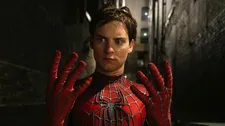 |
| Sam Raimi's Spider-Man |
On Screen One a superhero movie. An anniversary screening no less! Sam Raimi has had a crack at Spider-man and now Marvel stablemate Doctor Strange, but in the early Nineties he and Stan Lee were looking for backing for a Thor movie. Raimi wasn't rumoured as director. Instead it was likely to be the Coen Brothers. Their Thor film would have been in place of Barton Fink. In a busy year and already committed to both Cool World and A River Runs Through It, Brad Pitt lost the role to Gary Sinise. John Malkovich as Loki led to a recurring line in Being John Malkovich about "that movie where he played the really horny guy." What's particularly interesting about this is trying to determine which set of the Coen Brothers turned up to direct a story about the The Man Called Thunder? Was it the Coens, Joel and Ethan, who directed the Ulysses inspired O! Brother Where Are Thou? Or was it the Coens, Ethan and Joel, who directed the Job inspired A Serious Man? There have been nods to the film in several places even before its Thortieth. Many have interpreted the scene in You Were Never Really Here where Joaquin Phoenix is seen between his stints in the Army and the FBI underwater in a spectacle helmet as a dream sequence, but True Believers know what it and the visit to a hardware store actually represent.
On Screen Two a sequel. As the retroactive and parallel continuities of Skynet and its equivalents developed, it became clear that there were appetites for new stories. In the deep forests of what will become Germany a naked figure arrives. They make their way to a nearby settlement, oppressed by the Gothic darkness of a landscape alien not just geographically but chronologically. Thrown 1,024 years into the past, a brave fighter of the human resistance arrives at Heorot and sees a skeletal arm above the fireplace. As its metal reflects the flickering of the candles we get the title. DIE TERMINATOR. It's not the first film to borrow from Beowulf, but there's already discussions about how likely the effects for Grendel's mother are to win awards.
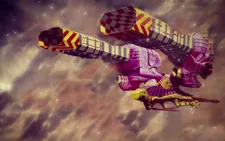 |
| Jodorowsky's Dune |
On Screen Three a documentary, David Lynch's Dune. After the success of Jodorowsky's Dune, a film about the not-making of another, David Lynch's Dune is a documentary about one of cinema's great white whales. After extensive pre-production, Dino De Laurentis canned the project in favour of Conan The Pirate. That film spawned a brief boom for historic naval action pictures as De Laurentis tried to recover the cost of all those ships. An offshore studio complex was used to film Waterworld in 1986, but without the budget available in our timeline in 1994 it sank with even less of a trace. The navy got its money's worth though, while Top Gun's depiction of aviators soared high and carried Charlie Sheen and recruitment with it, Oliver Stone's Swift Boats followed the ethical dilemmas of a young man in Vietnam's Brown-Water Navy. Torn between Patrol Boat commanders, Emilio Estevez' performance would be compared to his father's in Apocalypse Now. Just as it had been joked about Raise The Titanic! that it would have been cheaper to lower the Atlantic, it's alleged that the wisdom was "water water everywhere and not a drop for Dune". Lynch would have the last laugh though, directing 1992's Batman film 'The Killing Joke'.
On Screen Four, another superhero movie. Wes Anderson's Fantastic Four leverages the distinct invention of one of cinema's most distinctive auteurs to the notoriously unfilmable heroes of New York. The delightful cutaways of the Baxter Building highlight model work and all manner of technique. The story involves a crisis caused by a confrontation between the Silver Surfer (Adrien Brody) and Franklin Richards (Timothee Chalamet/Tom Holland). Franklin is the son of Mr Fantastic and Sue Storm, a superhero himself with powers to warp reality. Told across 16 chapters, Anderson's troupe of actors turn up in multiple roles across multiverses. While there's been excitement about the stop motion segment not least because of the use of hand-blown glass filled with mercury vapour for the Herald of Galactus, critics (myself included) have been raving about Tilda Swinton's turn as The Thing.
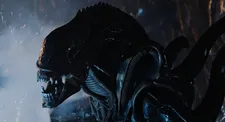 |
| Aliens |
On Screen Five, Neil Blomkamp's Alien Sideways/Infinity (pronounced "alienate") builds on the already complex continuity of the Weyland-Yutaniverse. After Aliens 2 suggested that the Ripley who'd travelled to Hadley's Hope was herself a replicant, the divergent Alien continuity established that the Nostromo's self destruct sequence had been stopped and the refinery complex removed from the navigation lane. Having lost not one but two colleagues to the chest-bursters, LN Ripley had incinerated one alien with the shuttle Narcissus' engines but left another behind with kilotonnes of complex hydrocarbons. Building on Giger's design and suggesting that the 'acid blood' was not just a biomechanical horror but a component of an electrically charged organism, Blomkamp's film features a team of Colonial Marines accompanied by cybernetically controlled xenomorphs to uncover the secrets of that stranded station. Filmed under the code-names "SKULL HIVE" and "The Secret Of Fire" it introduces a whole new kind of monster, the Royal Jelly.
Screen Six another high adventure space sequel, Jupiter Ascendant. The Wachowski's return to the story of Jupiter Jones and deal with the consequences of Jupiter (Mila Kunis) having inherited unimaginable galactic wealth that can only be realised through genocide. The first film had its fair share of high concept ideas, but the sequel's examination of the problems of the hyper-rich and late stage capitalism created something as self-reflexive and meta-textual as our own Matrix: Resurrections.
Screen Seven is another anniversary screening, a tenth anniversary of Sacha Baron-Cohen's Freddy Mercury biopic. Its production was subject to extensive legal wrangling, to the extent that Queen not only refused cooperation but prevented the use of any of the music. Rather than being deterred, Baron-Cohen leant into it as an artistic constraint. Appearing in cinemas first at the same time as The Artist, the tendency in Hollywood to have similar films appear at the same time apparently included black and white films in the silent tradition. Written, directed, and starring Baron-Cohen as Mercury, it remains a matter of contention that its only Oscar nod was as Best Foreign Language film as its single line of dialogue was in Zanzibarian Swahili. John Travolta's pronunciation of its title, Mfalme, remains a meme.
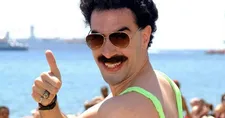 |
| Sacha Baron Cohen |
Screen Eight is where things start to get complicated. Tom Hillenbrand's novel Der Kaffeedieb (The Coffee Theif) is a historical heist novel. Based on the true story of how the Dutch broke the Ottoman coffee monopoly by stealing the secret of roasting, this is a rollicking 17th Century caper based on a book not yet translated to English. Florian Henckel von Donnersmarck seems a perfect director for it, he's already done period pictures and the stately length of his oeuvre is potentially perfect for those with a need for caffeine and a large bladder.
Screen Nine? I haven't heard that name in years. Nicolas Cage gets his due as Spider-Man Noir. After appearing as a villain in a Tom Cruise movie and in The Mandalorian, Werner Herzog reunites with Cage. Bad Lieutenant: Port Of Call New Orleans has nothing on the hyper-weirdness of Spider-Man Noir. Herzog's commitment to something approaching realism saw him use vintage cameras to document the always-raining adventures of photographer Peter Parker. From initial battle sequences with the French Foreign Legion to the fateful bite by a magically imbued spider in Egypt to the climactic struggle with Michael Shannon's Venom, Spider-Man Noir borrows from various cinematic traditions but especially from Nosferatu and Indiana Jones. Many sequences were filmed in Glasgow, though Renfield Street is almost unrecognisable due to the grain of the film and the quantity of precipitation. JK Simmons reprises his role as J Jonah Jameson, suggesting that the J Jonah Jameson in other films is in fact a J Jonah Jameson Junior. He knows that Spider-Man is a menace, always roughing up innocent foreign seamen lost at the Navy Yard and disrupting legal assemblies of the American Bund at Madison Sphere Gardens.
Screen Ten brings another Spider-Man alum back to cinemas. Willem Defoe reprises his role as He in Lars Von Trier's Archangel. Usually stylised in capitals with the symbol for Saturn as the H, Trier's film was described by one critic who saw it at Cannes Directors' Fortnight as "academia by way of titanomachy". As a limping dean, He must confront a student body in rebellion. Confined to just three locations, Fraternity, Sorority, Menagerie, the minimalism of Dogville is starkly contrasted with the use of CG effects. If you have access to MMDB check out the bit about 'crazy credits'. There are only two credited roles, "He - Willem Dafoe", and "They - " which goes on for 615 lines.
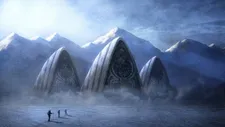 |
| At The Mountains Of Madness |
Screen Eleven has an adaptation of Steph Swainston's novel The Year Of Our War. The first in the Castle series, it follows the misadventures of the crossbreed Jant. A winged humanoid, he is a member of The Immortals, a group granted freedom from aging by the undying Emperor by being the best at what they do. He is the messenger. Addicted to a drug that grants him access to an alternate reality, he is increasingly tempted as an invading force of giant insectoid creatures begin to attack the kingdoms that pay fealty to the Emperor. Advances in costume, and especially cosplay, mean that Jant's wings can be depicted with practical effects, though in accordance with the book's descriptions there's still extensive prosthetics to accommodate the muscular demands of the six-limbed lush.
Screen Twelve poses a dilemma. My ticket said 'Guillermo Del Toro's' but it got water damaged. I'm not sure if the spray was saltwater from Pacific Rim: Maelstrom or freshwater from his The Hobbit. All I know is that there are going to be a lot of fans of both who are hoping that Del Toro's version will give them what they hoped for in their own realities. While audiences might enjoy the comfort of new works in well established continuities like Osleo Trennert: A Star Wars Story, Del Toro's Hobbit makes use of the special effects team he built for In The Mountains Of Madness. Pacific Rim: Maelstrom's counter-attack narrative spends the first few minutes in a small town that's subject to a kaiju strike. It's only as time passes and thanks to extensive special effects work that the scrambling locals are revealed to be the aliens who had sent monsters to Earth, and the kaiju the vanguard of the jaegers bringing the fight to their homeworld. Pairing fantastic sensibilities with a parable about revenge and justice, both seem a good way to spend two hours. Maybe I can find a mirror and get a double feature?
Finally, Screen Thirteen has a showing of Doctor Strange In The Multiverse Of Madness, and as far as I can tell it's exactly the same. Martin Freeman was great as BBC's Sherlock, and it's great to see him getting film roles.





















